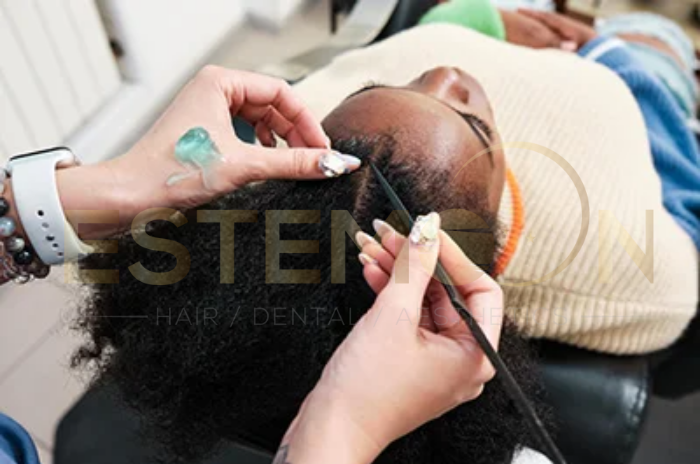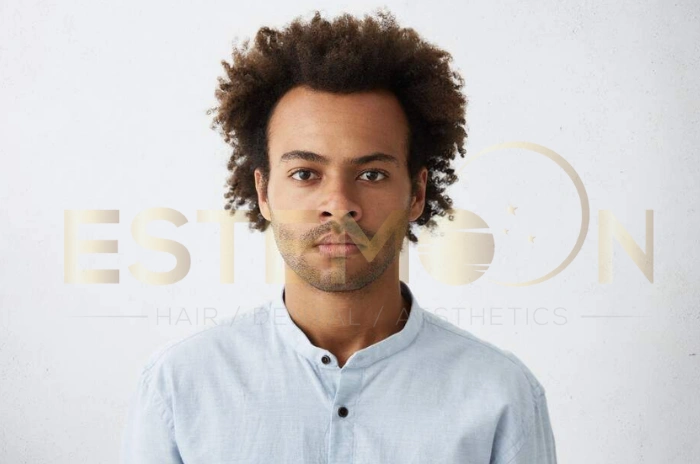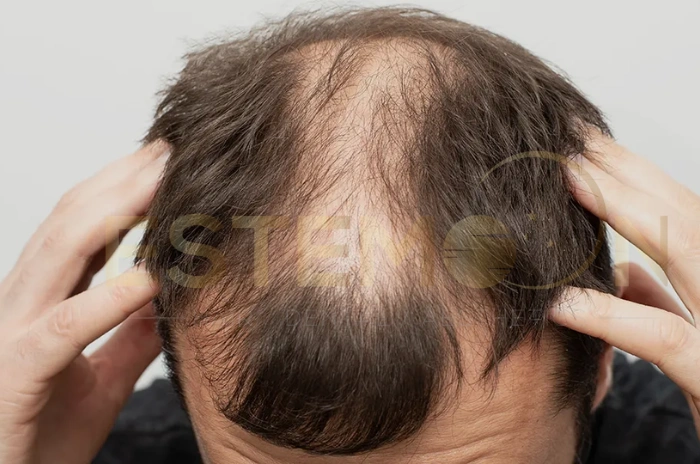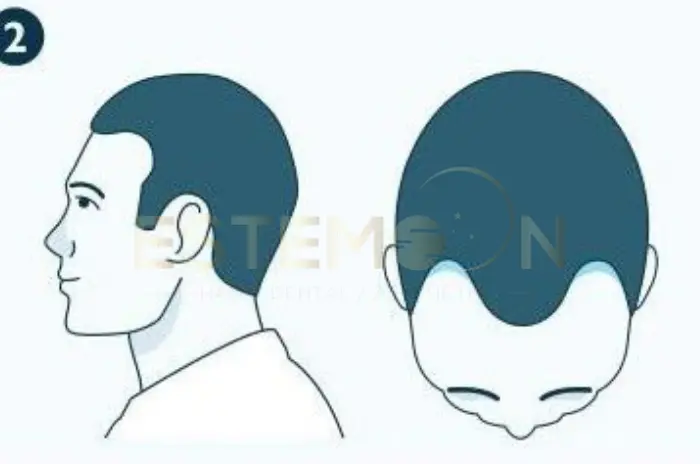Afro hair transplant procedures require specialized techniques and expertise that differ significantly from traditional hair restoration methods. The unique characteristics of African American hair present both challenges and opportunities for surgeons and patients alike. Understanding these differences is crucial for anyone considering hair transplant for African hair.
The curved nature of Afro-textured hair follicles makes extraction and implantation more complex than straight hair varieties. This complexity affects everything from surgical planning to post-operative care. Patients with curly hair patterns need surgeons who understand the specific requirements of ethnic hair transplant procedures.
Black men hair loss often involves different patterns and causes compared to other ethnicities. Conditions like cicatricial alopecia and folliculitis can complicate the transplant process. These factors make choosing an experienced surgeon essential for successful black hair transplant outcomes.
The success rate of Afro hair transplant procedures has improved dramatically with advances in surgical techniques. However, patients must understand the unique considerations involved in their specific hair type. This knowledge helps set realistic expectations and ensures optimal results.

The Unique Nature of Afro-Textured Hair: Why Shape Matters
The fundamental difference in Afro hair transplant procedures lies in the follicle structure itself. Unlike straight hair follicles that grow perpendicular to the scalp, African American hair follicles have a curved, spiral shape beneath the skin surface. This curvature extends deep into the dermis, creating challenges during both extraction and implantation phases.
The curved follicle structure affects how surgeons must approach FUE for black men. Traditional extraction techniques designed for straight hair can damage the curved follicles, leading to higher transection rates. Surgeons must adjust their extraction angles and use specialized punches to follow the natural curve of each follicle.
Curly hair transplant procedures require precise mapping of follicle direction and depth. The surgeon must understand how each follicle curves beneath the surface to avoid damage during extraction. This mapping process takes more time but ensures better graft survival rates.
The spiral nature of ethnic hair also affects how transplanted follicles heal and integrate with existing hair. The curved growth pattern means that even small positioning errors can result in unnatural-looking results. Surgeons must account for the natural curl pattern when creating the recipient sites.
Black hair transplant success depends heavily on preserving the natural follicle architecture. Any damage to the curved structure can result in poor growth or altered hair texture. This is why specialized training and experience are crucial for surgeons performing these procedures.
Why Afro Hair Transplants Require Specialized Expertise?
Afro hair transplant procedures demand surgeons with specific training and experience in ethnic hair transplant techniques. The learning curve for these procedures is steep, as traditional hair restoration training may not adequately prepare surgeons for the unique challenges of African American hair.
Specialized expertise begins with understanding follicle extraction techniques for curved hair. Standard FUE punches and extraction methods often result in high transection rates when used on curly hair. Surgeons must modify their approach, using different punch sizes and extraction angles to successfully harvest intact follicles.
The implantation phase of black hair transplant procedures requires different skills than straight hair transplantation. Creating recipient sites must account for the natural curl pattern and growth direction of Afro-textured hair. Improper site creation can result in ingrown hairs or unnatural growth patterns.
Hair transplant for African hair also requires understanding of common scalp conditions that affect this population. Surgeons must be able to identify and manage conditions like cicatricial alopecia, keloid formation, and folliculitis treatment needs. These conditions can significantly impact transplant success if not properly addressed.
Experience with ethnic hair transplant procedures helps surgeons recognize the subtle differences in hair characteristics within the African diaspora. Not all black men hair loss patterns are identical, and successful surgeons adapt their techniques based on individual hair characteristics and scalp conditions.
Risks and Complications of Afro Hair Transplants
Afro hair transplant procedures carry specific risks that are less common in other hair types. Understanding these complications helps patients make informed decisions and choose appropriately experienced surgeons. The curved follicle structure increases the complexity and potential for complications during surgery.
Keloid scarring hair transplant complications represent one of the most serious risks for patients with African American hair. The genetic predisposition to keloid formation in darker skin types can lead to raised, thick scars that are both cosmetically undesirable and functionally problematic. Proper surgical technique and post-operative care are crucial for prevention.
Ingrown hairs, medically known as Pseudofolliculitis Barbae, pose another significant risk in curly hair transplant procedures. The curved nature of the transplanted hairs can lead to ingrowth, causing inflammation, infection, and poor cosmetic outcomes. This complication requires both preventive measures and ongoing management.
Folliculitis treatment may be necessary both before and after ethnic hair transplant procedures. Chronic folliculitis can affect both donor and recipient areas, potentially compromising transplant success. Surgeons must evaluate and treat any existing follicular inflammation before proceeding with surgery.
The risk of poor graft survival is higher in black hair transplant procedures due to the increased handling required during curved follicle extraction. Each additional manipulation of the delicate follicle structure increases the risk of damage and subsequent poor growth. This makes surgical skill and experience even more critical.
Cicatricial alopecia can complicate Afro hair transplant planning and execution. This scarring condition affects the scalp’s ability to support new hair growth and may progress even after successful transplantation. Proper diagnosis and management are essential before considering surgery.

Why Graft Survival is Critical in Afro Hair Transplants?
Graft survival rates in Afro hair transplant procedures are typically lower than those achieved with straight hair, making every follicle precious. The curved structure of African American hair follicles makes them more susceptible to damage during extraction and handling, requiring exceptional surgical skill and careful technique.
The transection rate, which measures how many follicles are damaged during extraction, is a critical metric in FUE for black men. While acceptable transection rates for straight hair might be 2-3%, rates above 5-8% in curly hair transplant procedures can significantly impact final results. Experienced surgeons achieve lower transection rates through specialized techniques and equipment.
Ethnic hair transplant procedures require longer surgery times to ensure careful handling of each graft. The additional time needed for proper extraction and implantation of curved follicles is an investment in final outcomes. Rushing these procedures typically results in poor graft survival and disappointing results.
The limited donor supply in many black men hair loss cases makes maximizing graft survival even more important. Unlike patients with straight hair who may have abundant donor hair, many African American patients have finite donor resources. Every damaged graft represents a lost opportunity for coverage.
Hair transplant for African hair success depends on maintaining follicle viability throughout the surgical process. This requires specialized storage solutions, careful handling techniques, and efficient surgical workflows. Surgeons must balance speed with precision to optimize graft survival.
Post-extraction care of grafts is particularly important in black hair transplant procedures. The curved follicles may require different storage conditions and handling protocols compared to straight hair grafts. Proper graft care can mean the difference between excellent and poor results.
Post-Operative Care of Afro Hair Transplants
Post-operative care following Afro hair transplant procedures requires specific modifications to account for the unique characteristics of African American hair and skin. The recovery protocol must address both the surgical sites and the particular challenges posed by curly hair growth patterns.
Preventing ingrown hairs is a primary concern during ethnic hair transplant recovery. The curved nature of transplanted hairs increases the risk of ingrowth, particularly in the first few months after surgery. Patients must follow specific cleansing and care protocols to minimize this risk and promote healthy hair emergence.
Keloid scarring hair transplant prevention requires careful attention to wound healing in the donor area. Patients with a history of keloid formation need modified care protocols, including specific dressing techniques and possibly preventive treatments. Early intervention is crucial if any signs of abnormal scarring develop.
Moisturizing becomes particularly important for patients with black hair transplant procedures. The scalp and hair of African American patients typically require more moisture than other hair types. Proper hydration supports healing and promotes healthy hair growth while preventing complications.
Folliculitis treatment may be necessary during the recovery period, as the combination of healing tissue and curved hair growth can predispose to follicular inflammation. Patients must be educated about recognizing early signs of folliculitis and seeking prompt treatment when needed.
The timeline for seeing results may be different following Afro hair transplant procedures. The curved growth pattern means that hairs may take longer to emerge and become visible. Patients need realistic expectations about when they will see initial growth and final results.
Sun protection is particularly important for patients undergoing hair transplant for African hair. While darker skin provides some natural sun protection, the healing scalp is vulnerable to UV damage. Proper sun protection protocols help prevent complications and support optimal healing.
FAQs About Is Afro Hair Transplant Different? What You Need to Know
Why is an Afro hair transplant considered more difficult than other types?
The curved, spiral structure of African American hair follicles makes extraction and implantation more technically challenging, requiring specialized surgical techniques and expertise.
What is a “transection rate” and why should I ask my surgeon about it?
Transection rate measures the percentage of follicles damaged during extraction, and it’s typically higher in curly hair transplant procedures, making surgeon experience crucial for success.
What is the best technique for an Afro hair transplant?
FUE for black men is generally preferred over strip harvesting due to reduced keloid scarring risk, though the specific technique should be tailored to individual hair characteristics.
How do you prevent ingrown hairs (Pseudofolliculitis Barbae) after the transplant?
Prevention involves proper cleansing protocols, gentle care of the transplanted area, and sometimes topical treatments to reduce inflammation and promote normal hair emergence.
How is the recovery different for Afro hair?
Recovery requires additional attention to moisturizing, folliculitis prevention, and keloid scarring monitoring, with potentially longer timelines for visible results.
Will the transplanted hair maintain its natural curl?
Yes, transplanted ethnic hair maintains its original texture and curl pattern since the follicle structure determines these characteristics, not the location of growth.
Follow us on social media for updates, tips, and patient success stories:




